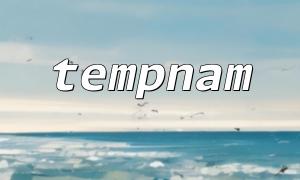Real-time communication has become an essential part of modern internet life. Whether it's online chat, real-time notifications, or multiplayer games, real-time communication technologies play a vital role. Web-based real-time communication systems commonly use the WebSocket protocol to achieve this.
This article will guide you through the process of using PHP to develop a powerful and highly customizable real-time communication system. We will cover the fundamentals of the WebSocket protocol and the steps to build a PHP WebSocket server.
WebSocket is a protocol that enables full-duplex communication over a single TCP connection. Unlike traditional HTTP, WebSocket begins with an HTTP upgrade request and then maintains a long-lived connection, allowing for real-time bidirectional communication. The WebSocket protocol offers a more efficient solution for real-time communication.
The first step in developing a PHP WebSocket server is to create a socket connection and listen for client connection requests. In PHP, this can be achieved using the stream_socket_server function.
$server = stream_socket_server("tcp://0.0.0.0:8000", $errno, $errstr);If the server fails to start, we can use the die() function to output an error message.
if (!$server) { die("Error: {$errstr} ({$errno})"); }Once the server starts and listens for connection requests, we need to handle connections from clients. This can be done using the stream_socket_accept function to accept client connections, and then creating a separate child process or thread for each connection to handle.
while ($client = stream_socket_accept($server)) { // Handle connection request }The WebSocket protocol uses an HTTP handshake process to establish a connection. When the client requests a connection, the server must return a specific handshake response. In PHP, you can use fgets and fwrite functions to read and write HTTP handshake data.
$request = fgets($client); // Read handshake requestParse key information in the request (such as Upgrade, Connection, Sec-WebSocket-Key, etc.), and construct the handshake response.
$response = "HTTP/1.1 101 Switching Protocols" . "Upgrade: websocket" . "Connection: Upgrade" . "Sec-WebSocket-Accept: " . base64_encode(sha1($key . "258EAFA5-E914-47DA-95CA-C5AB0DC85B11", true)) . "";Once the WebSocket handshake is complete, real-time message transmission can begin between the server and client. The WebSocket protocol uses specific data frame formats for message transmission. In PHP, you can use the stream_socket_recvfrom function to receive data sent by the client and the stream_socket_sendto function to send data back to the client.
$data = stream_socket_recvfrom($client, 1024); // Receive data frameDeveloping a PHP WebSocket server is just the first step in building a real-time communication system. To create a system with rich functionality and high customization, we need to design a message protocol, implement user authentication and authorization, and support group chat, among other features.
To transmit messages between the server and client, we need to define a message protocol. This protocol can include message types, data formats, etc. By adding specific fields to the message, various features such as private chat and file transfer can be implemented.
To protect user data and ensure system security, we need to implement user authentication and authorization. This can be done using authentication tokens, access tokens, etc., to verify user identity, and control access to system resources based on user roles and permissions.
In addition to private messaging, group chat is another essential feature of real-time communication systems. Group chat can be supported by allowing users to create groups, join or leave groups, and more, providing a comprehensive communication tool for users.
This article introduced the basic steps to develop a PHP WebSocket server and provided suggestions for building a powerful and highly customizable real-time communication system. By understanding the WebSocket protocol and developing a PHP WebSocket server, you can create a real-time communication system tailored to your specific needs, offering users an enhanced interactive experience.









